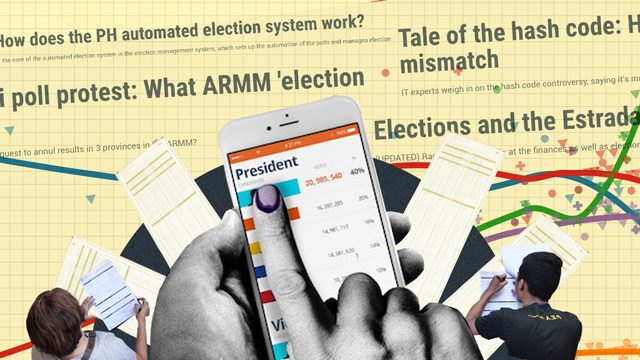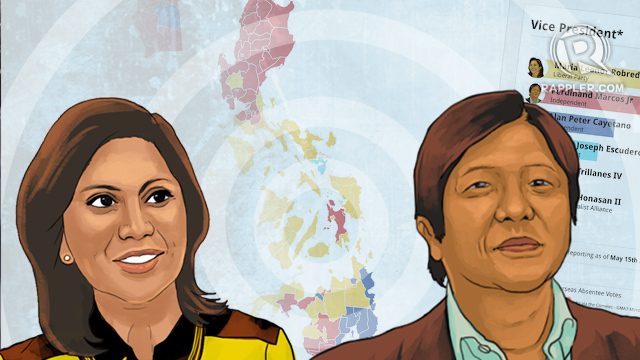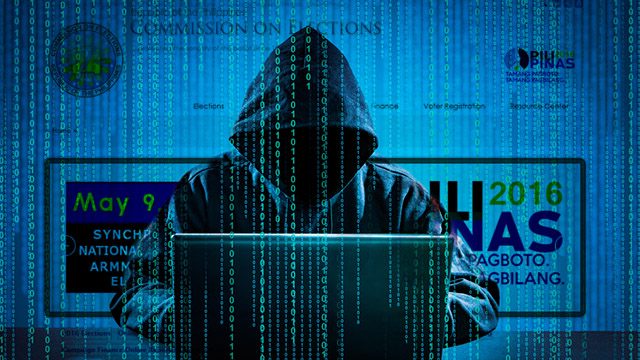SUMMARY
This is AI generated summarization, which may have errors. For context, always refer to the full article.

With the automation of elections in the Philippines, election coverage was fueled by one important element: data. Lots and lots of data.
I have covered two national elections, the first in May 2013 – just a month into my employment. Talk about “baptism of fire.” But my interest in elections made me excited about it.
Data powered my first election stories for Rappler’s #PHVote coverage. I wrote about the fewer number of independent candidates in 2013, the mayor-vice mayor “switcheroo” attempts, and the mayor-vs-vice mayor contests in local polls.
Shortly after Election Day, I was stationed at the PICC for the senatorial and party list canvasses, helping update Rappler’s official results page.
I then assisted the Research Team in debunking the alleged “60-30-10” pattern that supposedly emerged in the senatorial race. (READ: High-tech vote watching: Going beyond 60-30-10)
Beyond the numbers, my colleague, Paterno Esmaquel II, and I teamed up in covering the Commission on Elections (Comelec) itself. I was witness to some of Comelec’s inner workings and got acquainted with election executives and staff, as well as fellow reporters.
In 2015, a transition in leadership took place at Comelec – from Sixto Brillantes Jr to Andres “Andy” Bautista. From that time until his resignation in 2017, Bautista’s relationship with election stakeholders was both smooth and tenuous.
While he, as chairman, welcomed new ideas in the conduct of the polls, Bautista also made some decisions that rattled watchdogs, newsrooms, and voters alike.
2016 polls
The 2016 elections proved to be more challenging for Rappler and for me, too. Exciting presidential and vice presidential races meant more eyes on the news, and faster transmission of votes demanded quicker analyses.
From the vote-counting machines in over 90,000 clustered precincts, millions of rows of data were transmitted to Comelec servers. News outfits like Rappler connected to these servers to reflect the Filipino vote in real time through maps and charts.
While all of this was happening, we made sense of the data not only on a national scale but also all the way down to the precinct level.
Every vote counts, especially in the 2016 elections. On the evening after polls closed, we watched as the votes for the VP race poured in, in what seemed to us would be a “hairline gap” between candidates Ferdinand “Bongbong” Marcos Jr and Leni Robredo. Even then, we realized what such close gap could mean in the months ahead.
Reports of alleged cheating in the VP elections after a cosmetic change in the script due to the “ñ” character were not supported by data, as attested by experts and Rappler’s own analysis.

We also checked out issues concerning “zero votes,” undervotes, overseas Filipino votes, and precincts with 100% voter turnout, which are related to the VP race. For instance, we noted that the behavior of voters with regard to undervoting has been essentially the same in the last two presidential polls. We also said that all of the VP bets benefited from their opponents getting “zero votes” in their respective bailiwicks.
Using election data, we said that “poll cheating” allegations in Quezon province didn’t add up. We also pointed out some precincts that were “dropped” in the process of updating transmitted election results between Comelec’s transparency and mirror servers. All candidates were affected by this glitch, but all was not lost, because the results files were still saved (and backed up) in other servers.
We later examined the electoral protest of losing VP bet Marcos against Vice President Robredo using a method to generate “election fingerprints” in areas covered in the said protest. (READ 1st of two parts: 2016 Bongbong vs Leni poll protest: What ARMM ‘election fingerprints’ say)
Before, after, beyond
Besides real-time processing of results on Election Day, Rappler also went all out in providing Filipinos with relevant information before and after the polls.
We gave a rundown of how the entire automated election system works. We also partnered with election watchdogs for voter education campaigns.
We in the Research Team provided fact checks and contexts during the presidential and vice presidential debates. We tracked the ups and downs of each candidate in opinion surveys as the campaign rolled on.
We likewise looked into news like the biometrics requirement in voter registration, politicians “taking shortcuts” to Congress via the party-list system, and the procurement of vote-counting machines, which comes with it the controversies that again put its provider, Smartmatic, on the spot.
In addition, Rappler explored the trends in past elections, using data from the last two automated polls. We flagged a possible voter registration anomaly in the ARMM, listed lessons learned from transmission problems in 2013, and checked whether there are “traces” left by “election thieves” in past polls.
After Election Day, our data analysis continued. But other events were unfolding as well, like the Liberal Party’s delay in submitting campaign contributions and expenditures, the filing of electoral protests by local bets, and the postponement of barangay and Sangguniang Kabataan (SK) elections.

‘Comeleak’
Then along came the massive hack affecting voter registration records in March 2016. Comelec was initially concerned about the defacement of its website that accompanied the breach. We investigated and found out that aside from the voters’ lists, the personal information of over 70 million Filipino voters – both active and deactivated ones – was also leaked online.
Experts couldn’t emphasize enough the threats to Filipinos’ online security following the incident. We found our names and personal details in it! Privacy officials later found Bautista liable for the voters’ data leak. (READ: What have we learned a year since ‘Comeleak’)
This incident was among the grounds cited in the impeachment complaint against Bautista filed in September 2017. However, the proceedings didn’t push through as President Rodrigo Duterte accelerated his resignation to late October. Bautista would have wanted to stay until the end of 2017 but the President accepted it “effective immediately.”
National elections in the Philippines happen only every 3 years, but the news surrounding it seem to go on and on. With the 4th automated elections coming up in May 2019, as well as the manual barangay and SK elections in May 2018, and with your support, Rappler will keep you posted on important developments, backed by data and insightful research. – Rappler.com
Add a comment
How does this make you feel?
There are no comments yet. Add your comment to start the conversation.